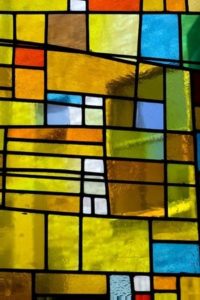 You may look at stained glass windows and wonder how exactly they are made The process is actually pretty fascinating, involving several people from the initial design stages to the final cementing process.
You may look at stained glass windows and wonder how exactly they are made The process is actually pretty fascinating, involving several people from the initial design stages to the final cementing process.
In general, the production of stained glass starts with the artist, who will sketch an outline of the eventual window. Next, an outline of each section of the window is painted on to the corresponding pieces of glass. Several tools are used to chip at the glass in order to create the exact shape from the artist’s design.
Once the individual pieces of glass are cut to the correct shapes for the design, they are painted. The type of paint used for stained glass windows is called vitreous paint, made by mixing glass particles with a special liquid. Once the glass is heated, this special type of paint becomes one with the glass. Next, metal piping- traditionally led- is used as framing to bind the various pieces of glass together. The entire window is then glazed into a single work of art. Finally, the window is cemented in order to ensure the pieces stay connected.
This process dates back to Medieval times. Though there has been refinements to the assembly process, including the materials used. But one thing remains constant; stained glass window assembly takes an advanced level of skill and an extended period of time.
